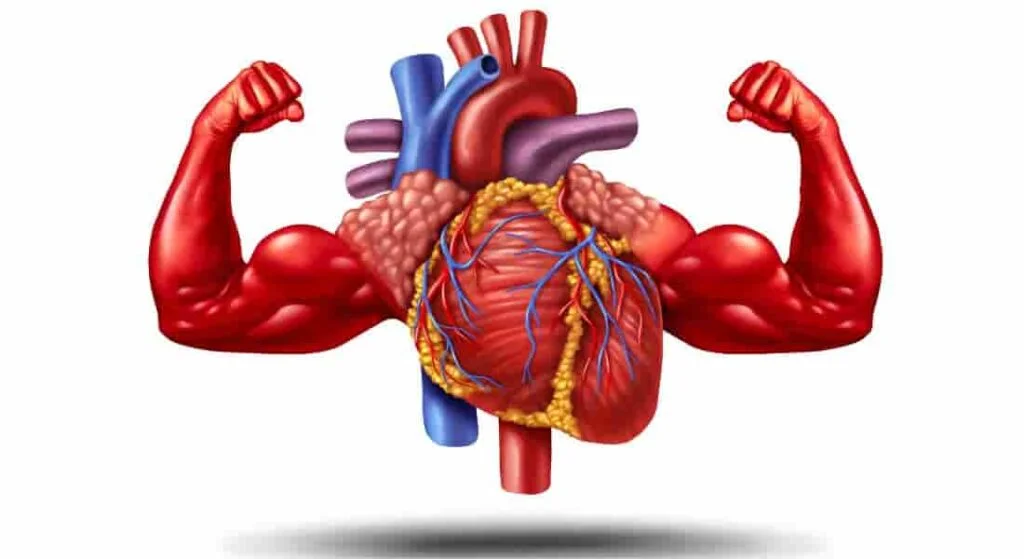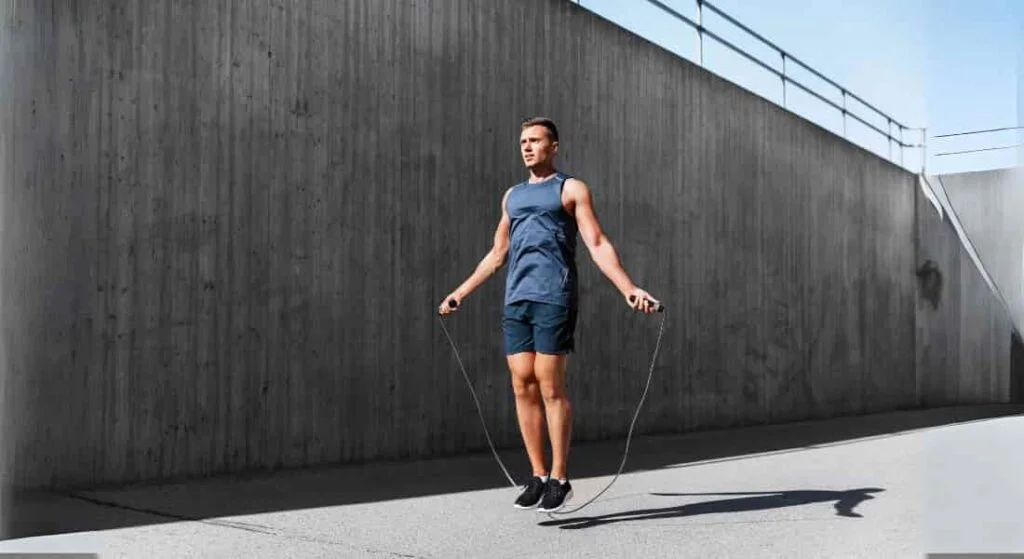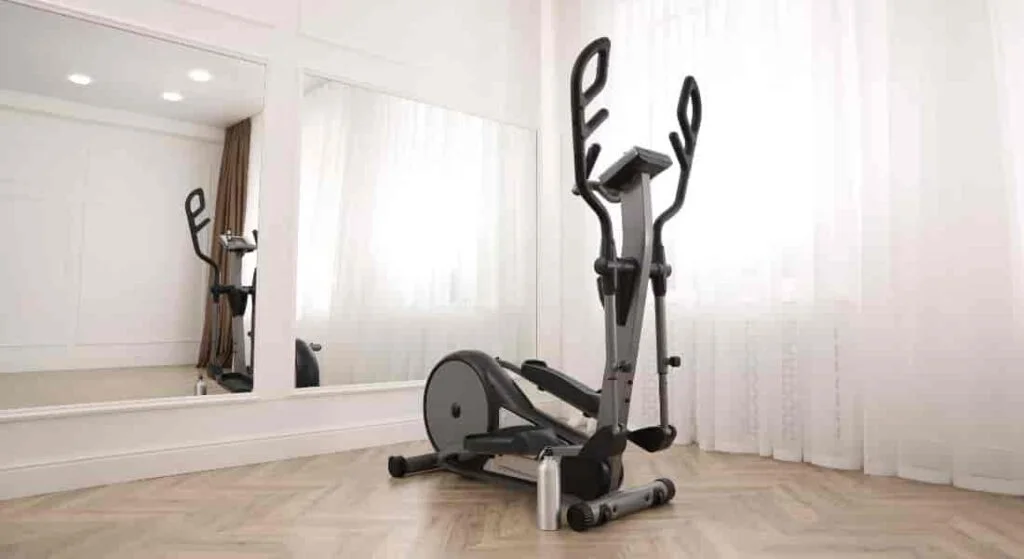
Okay runner folks, time for some heart-pumping cardio! Whether you’re training for your next 5k or just trying to stay in shape, mixing up your running routine with other cardio exercises is key.
Lace up those running shoes of my choice and pound the pavement day in and day out because that’s your jam. But cross-training is vital to build endurance and prevent injury.
In this complete guide, we’ll share the must-do cardio workouts that will take your runs to the next level. From biking to swimming to rowing and beyond, we’ve got the moves that will make you faster, stronger, and ready to own that next race day. Get ready to feel that burn!
How Should I Warm Up and Cool Down?
A proper warm-up and cool-down are essential for any cardio workout, especially for runners. Take the time to warm up your muscles before running, and cool down when you’re done.
Warm Up

Before you hit the road or treadmill, spend 5 to 10 minutes warming up your muscles. Start with some light cardio, like marching in place or using an exercise bike. Then do some dynamic stretches that mimic the motion of running.
Things like butt kicks, high knees, and leg swings are great options. Start slowly a build up the intensity and range of motion. The goal is to increase your heart rate, warm up your muscles, and prepare your joints and connective tissue for the impact of running. Don’t forget to know your pace.
Related: Runners, Click Here For Ideal Running Pace Per Mile
Cool Down

Just as important as the warm-up is cooling down after your run. Slowly decrease your speed and walk for a few minutes. This allows your breathing and heart rate to come back to normal and prevents dizziness or nausea.
Do some gentle static stretches, holding each stretch for 15–30 seconds. Focus on your legs—hamstrings, quads, calves, and hip flexors. Stretching at the end of your workout aids in recovery and flexibility.
Be sure to stretch and stay active; don’t just stop and sit down right after exercise. Keep walking around for a few minutes. Staying active during your cool-down allows your heart rate to come down gradually. An abrupt stop can cause dizziness from the drop in blood pressure and circulation.
Following a proper warm-up and cool-down routine will minimize injury risk, maximize your performance, and allow for a quicker recovery. It only takes a few extra minutes, but the benefits of your running routine are huge. Make it a habit.
What’s My Target Heart Rate?

The key to effective cardio exercise for runners is exercising at the right intensity. You want to aim for your target heart rate zone, which is 60 to 85% of your maximum heart rate.
To determine your maximum heart rate, take 220 from the number of years. So if you’re 30 years old, your max heart rate is around 190 beats per minute (BPM).
Your target zone for cardio exercise would be 114 to 162 BPM (60–85% of 190). When you’re in this zone, you’ll be working at a moderate-to-vigorous intensity. You should be breathing heavily but still be able to carry on a conversation.
If you have a heart rate monitor, aim for the higher end of your target zone (around 80% of max) for the most effective fat-burning cardio exercise.
Aiming for your target heart rate zone during cardio exercise will ensure you’re working at the right intensity to maximize fat burning and improve your running endurance. Monitor your heart rate regularly and make adjustments as needed to stay within your zone.
Related: Demystifying Maximum Heart Rate Secret
Top Cardio Exercises to Improve Running Speed and Endurance

To become a faster, stronger runner, you need to incorporate cardio exercises that boost your endurance and leg power. Here are some of the best cardio workouts for runners:
High Intensity Interval Training (HIIT)
High intensity interval training (HIIT) is characterized by short bursts of intense exercise alternated with rest phases. For runners, try sprint intervals: after a good warm-up, sprint for 1 minute and jog for 2 minutes. Repeat this 10–15 times. This helps increase your anaerobic threshold, so you can run faster for longer.
Related: Should You Use High Intensity Interval Training To Improve Your Runs?
Swimming

Swimming provides an intense full-body workout without impacting your joints. Try swimming freestyle laps, using a kickboard for leg exercises, or aqua jogging. Swimming improves your cardiovascular fitness and endurance.
Cycling

Riding a bike, whether outdoors or on a stationary bike, is easy on the joints but provides an excellent aerobic workout for runners. Aim for 30–60 minutes of biking three times a week. Cycling helps strengthen your legs and increase endurance.
Jump Rope

Jumping rope is a good sport that helps develop foot speed, coordination, and speed endurance. Begin with simple jumps and progress to the higher levels. Do 3-5 sets of a two- to three-minute jump, with a one-minute rest after every set. Be extremely cautious, even wearing a helmet, until you are used to it.
Elliptical Training

The elliptical machine provides an intense cardio workout without any impact. Use a high incline and resistance level, and keep your cadence up. Elliptical training helps strengthen your legs and core, increasing your endurance and power. Aim for 30–60 minutes, 2-3 times a week.
In addition to your running schedule, try incorporating 2-3 of these cardio exercises per week. Begin with only 15–20 minutes, but increase the duration as your endurance progresses. These routines, accompanied by strength training, will make you a quicker and more efficient athlete.
Cardio Workout Routines for Runners
To improve your running endurance and performance, incorporate cardio exercises into your routine. Here are some great options:
High Knees

This exercise works your core and hip flexors. Stand with your feet shoulder-width apart and raise one knee at a time up to your chest as high and as fast as you can. Swing your arms for momentum. Do this for 30–60 seconds.
Burpees

The burpee works your entire body. Start standing, drop into a squat, kick your feet back to a push-up position, then bring your feet back in and jump up. Repeat for several reps. Burpees significantly boost your heart rate and calorie burn.
Related: A 10 Mile Run And Caloric Mystery Unveiled
Jump Rope
Jumping rope is a full-body workout that enhances foot speed and coordination. It provides an intense cardio challenge, burning over 1,000 calories per hour. Start with basic jumps and work your way up to more advanced moves like criss-crosses or high knee jumps.
Related: 5K Calorie Burn Simply Explained
Stationary Bike

Riding a stationary bike, whether upright or recumbent, has low impact, so it’s easy on the joints. Crank up the resistance and go for interval rides by alternating between high-intensity sprints and recovery periods. This improves endurance and leg strength for running.
Treadmill Running

If the weather prevents you from running outside, hop on a treadmill. You can do interval or hill workouts by adjusting the speed and incline. Start at an easy jog and increase the speed for 1-2 minutes, then recover and repeat.
For hill training, increase the incline for several minutes, then reduce it back to a flat run. Incorporating a variety of cardio exercises into your routine 2-3 times a week will make you a stronger, faster runner.
Start with only 10–15 minutes a couple of times per week and work your way up as you continue increasing in endurance. Mixing up your cardio workouts will also prevent boredom and help you continuously progress.
Bonus Tip
Staying dedicated to cardio exercise, in addition to your running schedule, is key to success.
Benefits of Cardio for Runners
Cardiovascular exercise provides many benefits for runners. Doing regular cardio workouts improves your endurance, strengthens your heart, and boosts your lung capacity, all of which will make you a better runner.
Improved Endurance
Endurance is about your ability to perform tasks requiring physical work for a long duration. Runners need endurance to complete long runs and races without getting excessively fatigued.
Related: Step Into The World of 20 Miles Walk
Cardio exercise helps build endurance by making your heart more efficient at delivering oxygen to your muscles. Over time, your heart rate lowers during activity, and it takes longer for your body to fatigue. That simply means you can run faster and longer just because of cardio.
Related: Unimagined Running Power Secrets for Improving Stamina
Stronger Heart
Your heart is a muscle, so exercising it regularly will make it stronger. A stronger heart can pump more blood with each beat, allowing it to beat slower during activity.
Runners with strong, efficient hearts tend to have lower resting heart rates and recover more quickly after intense training. Cardio exercise is key to building a strong, healthy heart.
Increased Lung Capacity

Cardio is also an effective means of enhancing your lung capacity by conditioning the respiratory system. Your lungs perform more efficiently in passing oxygen into your bloodstream and carbon dioxide out.
Regular cardio increases oxygen utilization by your muscles per breath. This ensures less breathlessness while running, an indication that you are engaged in activity, and it is possible to maintain a rhythmical pattern of breathing even when performing intensive runs.
In summary, cardio exercise provides essential benefits for runners, like improved endurance, a stronger heart, and increased lung capacity. Aim for at least 150 minutes per week of moderate cardio exercise, such as running, swimming, or biking, to gain these benefits and become a stronger runner.
Related: Curious Minds Run Daily Kilometers
Consistency is key; even just 30 minutes a day, a few times a week, can go a long way. Your heart, lungs, and endurance will thank you!
Tips for Maximizing Your Cardio Workouts
To get the most out of your cardio workouts, keep these tips in mind:
Interval or high-intensity training: Adding short bursts of increased intensity can boost your workout’s effectiveness. Try alternating between faster and slower paces for 1–2 minutes at a time. This challenges your body and prevents plateaus. You can apply intervals to running, biking, swimming, or elliptical training.
Cross-train: Mix up your routine by incorporating different cardio exercises. Try running one day, biking the next day, and swimming on the third day. Cross-training reduces injury risk and keeps you from getting bored. It also provides balanced fitness by working your muscles in different ways.
Increase your speed and distance over time: As your endurance improves, gradually increase your speed, distance, or intensity. This progressive overload continues to challenge your body as it adapts to the current demands. Even small increases of 5–10% in speed or distance over weeks or months can lead to greater cardiovascular benefits.
Related: Tired of Short Runs? Learn How to Run More Miles
Use heart rate tracking: A heart rate monitor is a useful tool for determining if you’re working out at the right intensity. For cardio exercise, aim for a heart rate between 60 to 85% of your maximum heart rate. This range provides an effective fat-burning workout. Adjust your speed and incline to stay within your target heart rate zone. Buy our tested one Garmin 010-02293-10 and thank us later.
Add strength training: Incorporating strength or resistance training into your routine 2-3 times a week complements your cardio workouts. Stronger muscles enable you to push harder during cardio exercise, maximizing the benefits. Focus on major muscle groups like the legs, core, back, and chest.
Staying hydrated and stretching: Drink plenty of water before and after your workout to aid your performance and recovery. Stretching helps your muscles warm up pre-workout and prevents tightness post-workout. Basic stretches for your legs, core, and back are especially useful for runners and other cardio enthusiasts.
With the right techniques and motivation, you can achieve fulfilling cardio workouts that challenge you and keep you progressing towards your fitness goals. Mix it up, start slowly, and build up your endurance over time. Remember, the key is to start moving and keep going!
